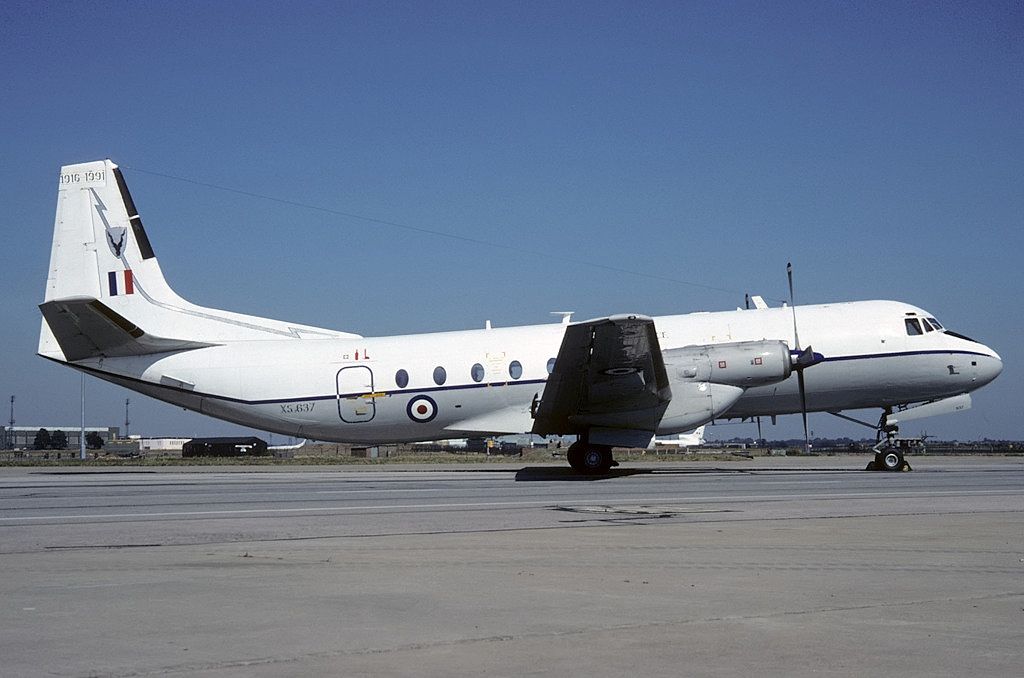Summary The Hawker Siddeley HS 748 was created to replace the Douglas DC-3. The RAF modified the 748 design to accommodate a kneeling undercarriage. RAF placed an order for 31 Andover C.
1 planes from Avro in 1963. The Hawker Siddeley Andover is a twin-engine turboprop aircraft designed and produced by Hawker Siddeley for military transport. The purpose-driven aircraft was designed for the Royal Air Force (RAF) of the United Kingdom.

Derived and developed from the Avro-designed HS 748, a 40- to 48-seat passenger airliner, the Hawker Siddeley HS 780 Andover was built for the British Royal Air Force. Taking its name from the Avro Andover, a transport and medical evacuation biplane that the RAF flew between wars, the HS 780 had a unique hydraulic kneeling landing gear that simplified loading and unloading. The aircraft performed its first flight in December 1963 and entered military service with the RAF in July 1965.
Only 37 aircraft were built, most used by the RAF and the Royal New Zealand Air Force. In the early 1960s, the Royal Air Force (RAF) asked the government to provide a medium tactical freighter. During the 1950s, aircraft manufacturers began to prioritize the production of civilian aircraft over military planes.
By the late 1950s, Vickers had secured a large end of the short-haul market with its four turboprop engined Vickers Viscount. Because of this, Manchester planemaker Avro decided to build a smaller regional airliner powered by a pair of Rolls-Royce Dart turboprop engines. The Hawker Siddeley HS 748 was seen as a replacement for the DC-3 Crew: 2-3 Capacity: 52 troops, 40 paratroops, or 24 stretchers Length: 78 ft Wingspan: 98 ft 3 inches Height: 30 feet 1 inch Max takeoff weight: 51,000 lbs Fuel capacity: 1,440 imperial gallons (1,729 US gallons) of fuel in integral wing tanks Powerplant: 2 × Rolls-Royce RDa.
12 Dart Mk 201 turboprop engines, 3,245 shp (2,420 kW) each equivalent At this point, the Douglas DC-3 was reaching the end of its usable life and had Avro thinking their offering would be a perfect replacement. When the RAF issued a request for its small freighter, Avro immediately saw the potential of its Avro 748 airliner and proposed building a military version. Fellow British aircraft manufacturer Handley Page also proposed a variant of its 47 to 56-seat Handley Page Herald airliner.
Following trials of both aircraft at Martlesham Heath in Suffolk during the 1961/1962 winter, the RAF selected the Avro 748 over the Herald. A look back into the six decades of history on the aircraft that replaced the DC-3. The kneeling undercarriage For its military version, the RAF asked Avro to add an upswept rear fuselage and loading ramp along with a unique hydraulic landing gear that enabled the plane to be lower to the ground for loading and unloading.
The RAF also requested Avro use more powerful Dart Mk 301s for the engines. According to the Royal Air Force (RAF) Museum , "The Andover was developed from the Avro 748 airliner to meet the requirement for Short Take-off & Landing (STOL) transport aircraft to operate in the trooping, paratrooping, airdropping, freighting and casevac roles. The modified aircraft incorporates a hydraulic kneeling arrangement in the main undercarriage to allow the rear loading door to adjust to any truckbed height.
" Apart from the kneeling undercarriage, the modified version of the 748 design for the RAF featured a raised tail unit and a rear loading ramp. The features resulted from a special requirement from the RAF to allow for easier loading and unloading of military cargo. The inter-city V/STOL concept was highly innovative for the time, but multiple challenges prevented it from ever getting off the drawing board.
The RAF ordered 31 planes Maximum speed: 278 knots (320 mph) at 15,000 feet Cruise speed: 235 knots (270 mph) Stall speed: 78 knots (90 mph) Range: 1,239 nautical miles with fuel for a 200 nautical mile diversion and 30 minutes of holding Service ceiling: 24,000 feet Rate of climb: 1,200 feet per minute In April 1963, the RAF placed an order with Avro for 31 planes to be designated the Andover C.1. The first aircraft prototype flew from Woodford Aerodrome near Macclesfield on December 23, 1963.
The first production, Andover C.1, flew from Woodford on July 9, 1965, and was delivered to 42 Squadron based at RAF Abingdon in Oxfordshire in June 1966. Now called the Hawker Siddeley Andover following Avro's merger into Hawker Siddeley Aviation in 1963, the RAF ordered six more planes to be based at RAF Khormaksar in Yemen.
A total of 10 Siddeley Andovers from the RAF went to the Royal New Zealand Air Force after retirement from the RAF service in the mid-1970s. According to the Air Force Museum of New Zealand , "The RNZAF acquired 10 Andovers second-hand from the Royal Air Force (RAF) in 1976 to fill the short to medium range tactical transport role. They served with No.
1 and 42 Squadrons at Whenuapai and Ohakea, as well as overseas on peacekeeping operations in the Middle East and Somalia. The aircraft were also used for parachute training and disaster relief, while two were designated as VIP aircraft." A New Zealand C-130 Hercules successfully evacuated an American in need of medical attention from Antarctica to New Zealand.
.



















